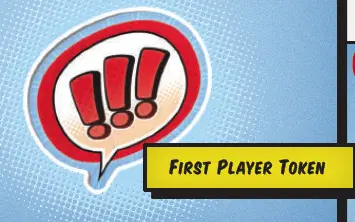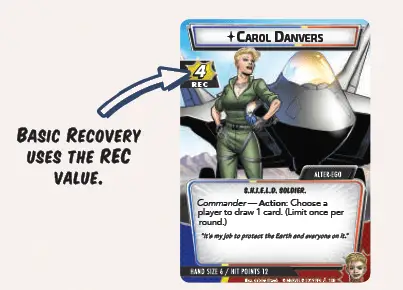Marvel Champions The Card Game Rules for those who hate reading rulebooks
I hate the hassle of reading rulebooks and wish they could get straight to the point. I wrote this guide with the aim of helping you learn how to play Marvel Champions Card Game quickly.
If you are looking for a Marvel Champions Card Game overview, understand its gameplay and appeal, click here for our summary and video, click here.
Players: 1 to 4 | Game duration from: 45 mins | Game Complexity: MEDIUM
Looking for the official Marvel Champions: The Card Game rules pdf / rulebook, click here.
What is the goal?
Marvel Champions The Card Game is a:
- cooperative card game for 1 to 4 players.
- recommended for ages 12+
You are a Marvel hero, playing the game as that character and their alter-ego. In the game, the players work together to defeat a villain (controlled by the game) who is trying to complete an evil plan.
A Living Card Game
You can customize your game by buying regularly released expansions.
Hero pack expansions introduce a new hero starter deck that can be played directly out of the pack. It also provides additional customization options for player decks.
Standalone scenario packs and in deluxe story boxes introduce new villains and adventures.
Unlike collectible card games, all expansions contain fixed non-randomised content.
Game setup
Select Heroes
Each player:
- selects one identity card
- places its alter-ego side face up in front
For First Game scenario:
- Take the Spider-man/Peter Parker and if 2 players are playing, Captain Marvel/Carol Danvers identity card from their deck
- Set each card to its alter-ego side

Select Hit Points
Set hit point dial to the starting hit points of their character, shown at bottom of the identity card.

Select First Player
As a group, select a first player and place 1st player token in front of that player.

Select Aside Obligations
For each played hero, set aside their obligation card.
Select Aside Nemesis Sets
For each hero in the game, set aside:
- nemesis card and
- the encounter cards for that nemesis
The nemesis cards do not start the game in play.
They may be brought into play by other card abilities during the game.
Collect Tokens and Status Cards
- Create a pool of damage tokens, threat tokens, and all-purpose counters within reach of each player.
- Place stacks of stunned, confused, and tough status cards near this pool.

Shuffle Player Decks
Each player shuffles their player deck and places it near their identity card.
First game scenario:
The Spiderman/Captain Marvel deck consists of the remaining Spiderman/Captain Marvel cards, Justice (yellow) and Basic (gray) cards from their starter pack.
Select VIllain
Select Villain and put their deck and main scheme deck into play.
First Game Scenario
- Use Rhino as Villain, with Rhino (I) and Rhino (II) as the Villain Deck.
- Stack Rhino’s Villain deck in sequential order, Rhino (I) on top and Rhino (II) on the bottom
- Scheme deck for this scenario is 1 card, The Break-In! Put the card into play on its 1A side.
Select VIllain’s Hit Points
- Set the villain’s hit point dial to the number near the bottom of the villain card multiplied by the number of players
Resolve Scheme Setup
- Resolve any “Setup” instructions on the main scheme card.
Create and Shuffle Encounter Deck
Shuffle the obligation cards that were set aside.
Draw Cards
- Each player’s hand size is shown on the bottom left of their identity card
- Each player draws a number of cards from their player deck equal to their hand size
Resolve Mulligans
- Each player may discard any number of cards from their hand and draw up to their starting hand size
- Do not shuffle discarded cards back into their decks
Resolve Character Setup Abilities
- Resolve any “setup” instructions listed on identity cards in play.
First game scenario:
There are no character setup instructions for Spiderman or Captain Marvel.
Gameplay
Playing a card
Perform the following steps:
- Place the card you want to play on the table.
- Pay the card’s cost. (See the “Resource Costs”)
- If the card is an ally, upgrade, or support, it enters play ready in the play area. If the card is an event, resolve its effects and place it your discard pile.
Ally Limit
You may have up to three allies in play under your control at any given time.
A player who controls three allies may play a different ally, immediately discarding one of their previous allies.

Use a Basic Power
Basic powers can be found on the player’s identity card.
The hero side has the character’s basic attack power, basic thwart power, and basic defense power.
The alter-ego side has the character’s basic recovery power. To use a basic power, the character must be in the form that has that power.
To use a basic power, perform the following steps:
- declare the power you want to use
- pay the power’s costs by exhausting the hero or alter-ego
- resolve the power’s effect
Basic Recovery:
- exhausts your alter-ego
- heals a number of hit points equal to your REC value
- Healing increases your hit point dial by the indicated amount but not above your maximum hit points

Basic Thwart:
- exhaust your hero and removes an amount of threat equal to your THW value from one scheme of your choice. Any scheme can be thwarted unless a card ability (such as the crisis symbol) prevents it.
Basic Attack:
- exhaust your hero and deals an amount of damage equal to your ATK value to one eligible enemy. Any enemy—villain or minion—in play is eligible unless a card ability (such as the guard keyword) prevents it.
Basic Defense:
- power may only be used when any hero is being attacked by an enemy.
- When this occurs, you may exhaust your hero to prevent an amount of damage equal to your DEF value.
- A hero may defend themself or any other hero. The hero that is defending takes damage (tracked on their hit point dial) from the attack that exceeds their DEF value.

Use an Ally
During your turn, you may use any number of allies you control to attack an enemy or to thwart a scheme.
To use an ally, a player performs the following steps:
- Exhaust the ally. (If the ally was already exhausted, it cannot be used in this way.)
- Declare whether ally is being used to attack an enemy or thwart a scheme.
- Declare target enemy or target scheme. Any enemy can be attacked and any scheme can be thwarted unless a card ability says otherwise.
- Resolve the attack by dealing the specified amount of damage to the enemy. Resolve the thwart by removing the specified amount of threat from the scheme.
- Deal consequential damage. If the ally that attacked has any damage icons under their ATK, deal the specified damage amount to the ally.
- If you thwarted and have any damage icons under your THW, do the same.

Trigger an Action Ability
- Action abilities are indicated by the word “Action” in bold.
- You can trigger abilities from:
- your controlled cards in play,
- from event cards played from your hand or
- from encounter cards that have such an ability.
- Declare which action ability you wish to trigger.
- Pay the ability’s cost, which precedes its effect, and is separated from the effect by an arrow icon (→). This is done by generating resources, as detailed in the “Resource Costs”. The generated resources must match the resources shown in the ability’s cost. Not all abilities have a cost, and some abilities have additional costs, such as “exhaust this card,” which must also be paid.
- Resolve the effect of the action ability.
A given action ability may be triggered any number of times per turn, so long as its costs can be paid and its effect can change the game.
Hero and Alter-Ego Abilities
If an ability is preceded by Hero or Alter-Ego or if an ability’s text references a specific form, you must be in the specified form in order to use or interact with the ability
If an ability does not specify a form, it may be used while the player is in either form.
Action Abilities on Encounter Cards
Some encounter cards have action abilities that players may use while the card is in play. During their turn, a player may pay the encounter card’s specified costs to resolve the ability.
There is no limit to the number of times this may be done during a turn, so long as that player pays each cost.
Other Triggered Abilities
In addition to action abilities, there are a few other types of triggered
abilities in the game:
- Interrupts,
- Responses, and
- Resource abilities.
Use of these abilities is optional, unless the bold ability trigger is preceded by the word “Forced.”
Each copy of a triggered ability may be used once each time the situation described by its text occurs.
“Resource” abilities may be used anytime the player who controls the ability is generating resources to pay a cost. Unless otherwise noted, the player controlling the resource card must be the one pays the cost.
“Interrupt” abilities may be used any time their specified condition would occur, immediately before that condition occurs. These abilities prevent or preempt an occurrence, sometimes stopping it outright, and sometimes changing the occurrence to something else.
“Response” abilities may be used any time their specified condition is met, immediately after that specified condition resolves or occurs.

End Player’s Turn
When a player has completed everything they wish or can do on their turn, that player announces that their turn is complete.
The next player (in clockwise order) begins their turn.
After all players have completed a turn, proceed to the “End of Player Phase” sequence below.







